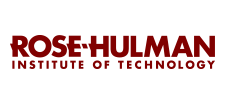Date of Award
5-2023
Document Type
Thesis
Degree Name
Master of Science in Optical Engineering
Department
Department of Physics and Optical Engineering
First Advisor
Syed Reza
Second Advisor
Sergio Granieri
Third Advisor
Hossein Alisafaee
Abstract
This thesis encompasses three chapters that delve into innovative studies within optical experiments. The overarching motivation behind this research is to enhance the efficiency, and versatility of measurement techniques used in the field. Furthermore, by exploring novel technologies and methodologies, these studies aim to overcome existing limitations and open new avenues for optical experimentation.
The first chapter addresses the challenge of accurately measuring the radius of curvature of a sample without physically moving the lens position. Conventional methods using single lenses are prone to errors caused by mechanical drift or instability. To mitigate these issues, the study introduces Tunable Focal Lenses (TFLs) as a replacement for fixed focal length lenses. By employing TFLs in Twyman-Green and Fizeau interferometry, the research demonstrates a more reliable and expeditious approach. The experimental results highlight the potential of TFLs to eliminate errors associated with physical lens movement and present a promising alternative to conventional lens configurations.
In the second chapter, the focus shifts to improving diffusing systems utilized in optical experiments. The motivation behind this study lies in the need for efficient and effective replacements for pinhole-based diffusers. Engineered Diffusers (EDs), with their advanced properties, emerge as a potential solution. Specifically, the research delves into utilizing the Light Shaping Diffuser (LSD) due to its high light transmission rate. The experiment explores the spatial characteristics of a collimated beam diffused by LSD and investigates methods to mitigate speckle patterns that often arise. To this end, the research introduces the Speckle Reducer (SR), which combines liquid crystal technology and diffractive optics. Through a comprehensive analysis utilizing techniques such as CCD imaging, Shack-Hartmann wavefront measurement, and knife-edge measurement, the study provides valuable insights into beam divergence calculation, beam profile analysis, and wavefront curvature measurement. By showcasing the potential of EDs, particularly LSDs, as viable alternatives to pinhole-based diffusing systems, this research paves the way for enhanced optical experiments.
The final chapter delves into the experimental exploration of LSDs and SRs for interferometry measurements. The primary motivation is to evaluate the effectiveness of this combination as an adaptive optical measurement tool. A Michelson interferometer is employed to evaluate, wherein a beam shaped by LSD and enhanced by SR is split using a beam splitter. The divided parts are directed towards a reference mirror and an adjustable mirror, respectively, before being recombined at the beam splitter. The resulting fringe pattern is captured by a CCD camera, enabling detailed analysis. Moreover, the study investigates the measurement of the refractive index of a thick glass placed between the beam splitter and mirror by utilizing the enhanced beam's bull's eye fringe pattern generated by the SR. The experiment aims to observe changes in fringe patterns as the glass is tilted at various angles, offering valuable insights into the potential applications of LSDs and SRs in interferometry measurements.
Through these three interconnected chapters, this research project presents a comprehensive exploration of cutting-edge techniques and technologies in optical experiments. By addressing key challenges and proposing innovative solutions, this work contributes to advancing measurement methodologies, offering new perspectives and possibilities for the optical research community.
Recommended Citation
Kim, Minjae, "Optical Metrology and Beam Shaping using Active Lensing and Engineered Diffusers" (2023). Graduate Theses - Physics and Optical Engineering. 29.
https://scholar.rose-hulman.edu/optics_grad_theses/29

